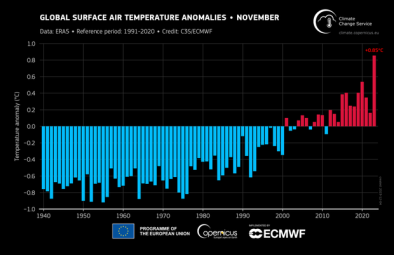Science Source
Detecting Greenhouse-Gas-Induced Climate Change with an Optimal Fingerprint Method
- Outlines a strategy using statistically optimal fingerprints to detect anthropogenic climate change is outlined and applies the strategy to near-surface temperature trends
- Rejects the null hypothesis that the latest observed 20-yr and 30-yr trend of near-surface temperature (ending in 1994) is part of natural variability with a risk of less than 2.5% to 5%
- States that, in other words, the probability that the warming is due to our estimated natural variability is less than 2.5% to 5%
- States that the increase in the signal-to-noise ratio by optimization of the fingerprint is of the order of 10%–30% in most cases
- Notes that in order to attribute the observed warming uniquely to anthropogenic greenhouse gas forcing, more information on the climate's response to other forcing mechanisms (e.g., changes in solar radiation, volcanic, or anthropogenic sulfate aerosols) and their interaction is needed
- Concludes that a statistically significant externally induced warming has been observed, but the estimate of the internal climate variability is still uncertain
Related Content
Headline

Feb 15, 2024 | Climate Nexus Hot News
Amazon Could Reach Tipping Point By Midcentury
Headline

Jan 16, 2024 | Climate Nexus Hot News
2023 Smashes Hottest Year Record
Headline

Dec 7, 2023 | Climate Nexus Hot News
It’s Official - 2023 Is World's The Hottest Year On Record
Headline

Dec 7, 2023 | Climate Nexus Hot News
Earth Veering Closer To Dangerous Tipping Points


